DIY Accent Wall: Framed Wallpaper
This DIY Accent Wall is Framed Wallpaper, which is a unique yet elegant accent that can be easily adapted to your personal style. This design is a great way to take things to the next level. Watch our video and follow the steps below to see how you can build a beautiful framed wallpaper accent wall like this in just one day! If you’re looking for more accent wall ideas, click here.
We used No. 210 Shingle to create this Framed Wallpaper Wall.
New to accent walls? Check out our DIY Accent Wall: Quick Start blog post to learn the basics!
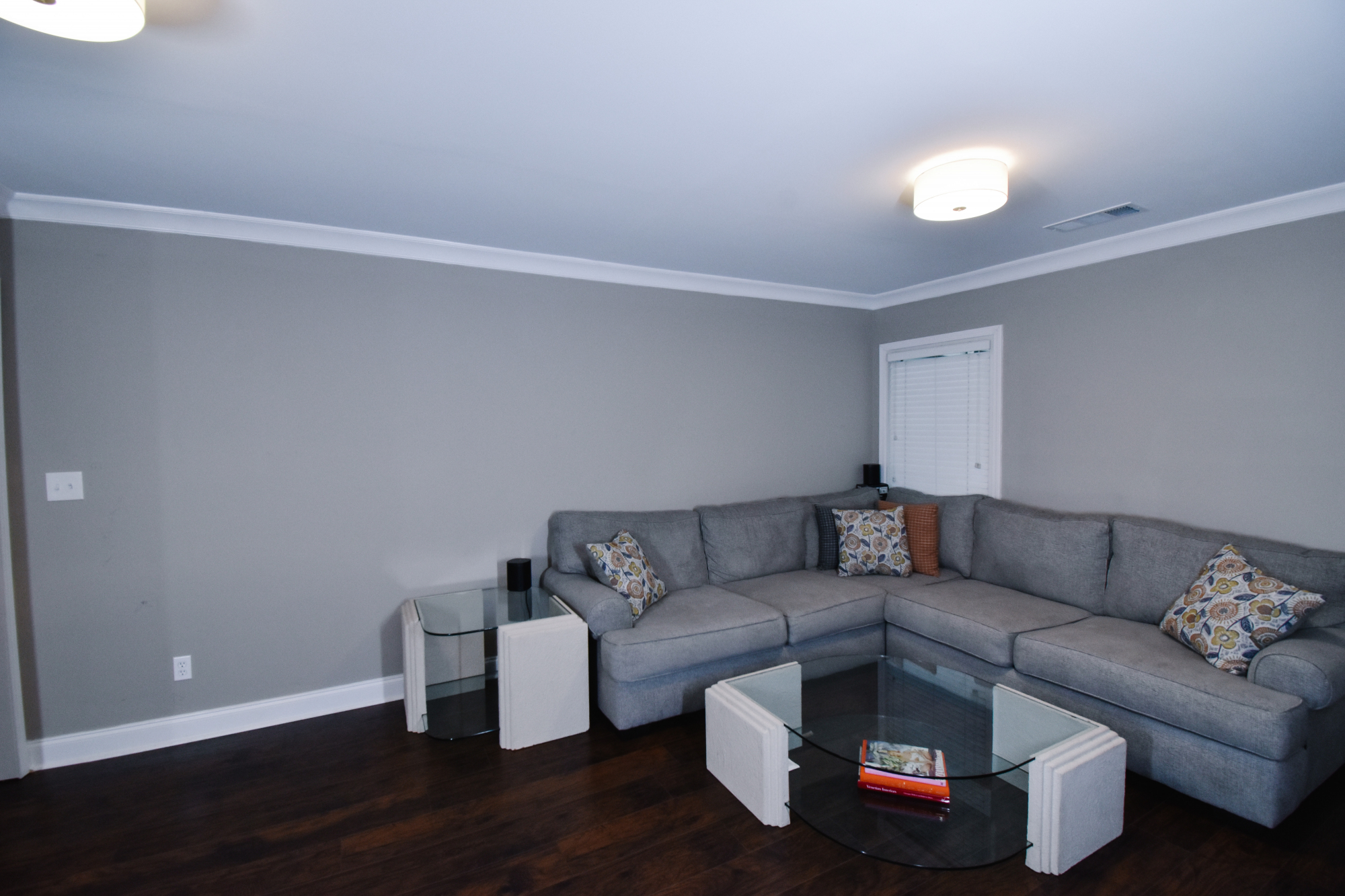
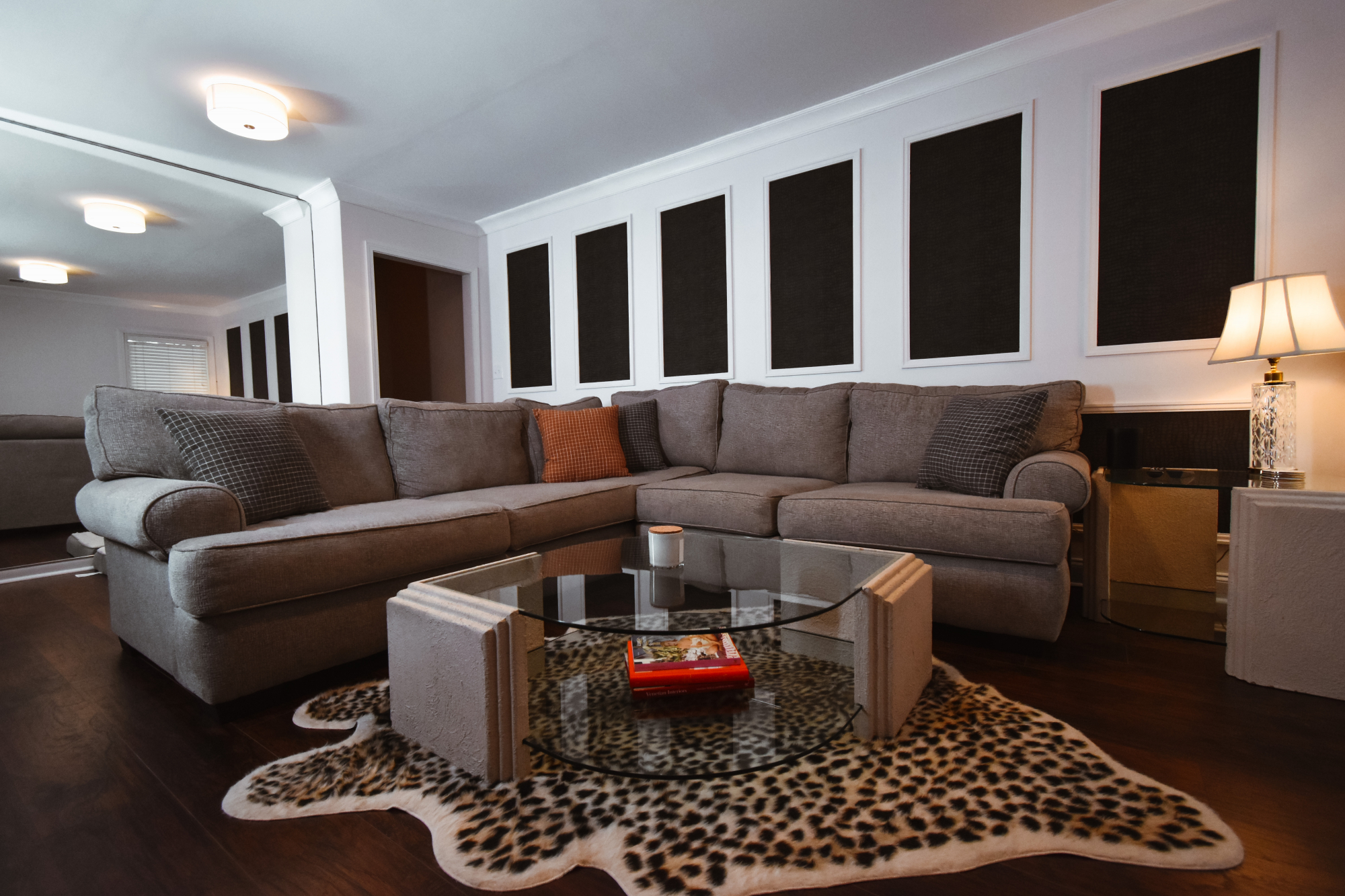
Materials:
- Liquid Nails
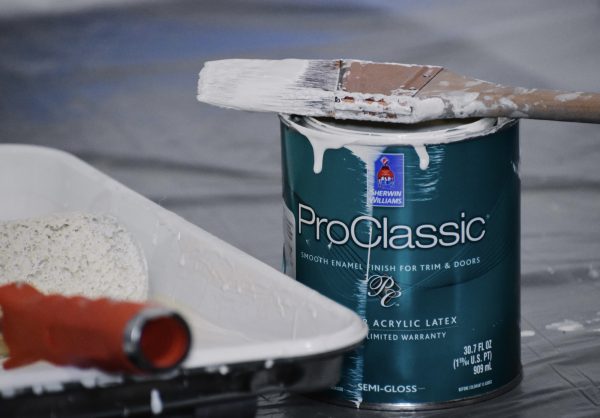
- Measuring tape
- Level
- Paint (1 gallon)
- Caulk
- Nail gun and finishing nails (2” nails)
- Paper and tape to cover up areas for paint
- Saw to cut moulding
- Paint sprayer or brush and roller
- Wallpaper
- Wallpaper glue
- Smoothing tool
- Precision knife
Profiles:
- No. 210 Shingle 5/8 in. x 1-5/8 in. x 96 in
Use this Green Print as a guide, but feel free to be creative with your design! Note: the size of your wall and the moulding used will affect the placement of the moulding.
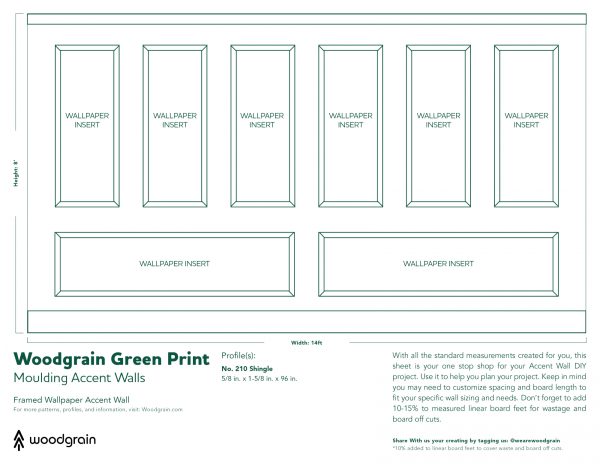
HOW TO INSTALL:
Step 1: Prepare for painting
Mask areas that you don’t want to get paint on (outlets, lights, furniture, window ledges) and put a ground cloth on the floor to ensure the paint does not get on the floor.
Step 2: Paint your wall
For this wall, we recommend using a paintbrush and paint roller rather than a paint sprayer.
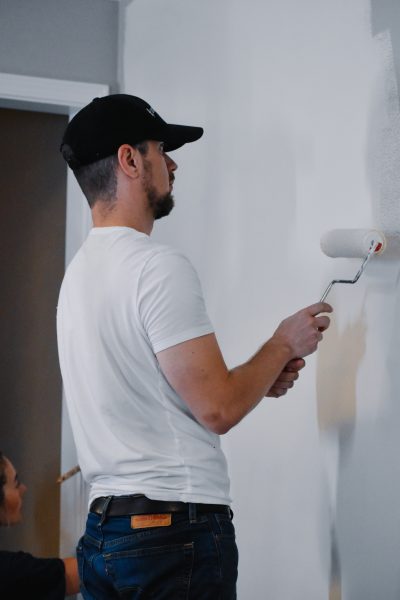
Step 3: Paint moulding
Paint your moulding. Usually one coat gets the job done but additional coats may be applied if necessary.
Step 4: Measure everything and mark your walls
Measure the wall height and width, and make sure you take into consideration outlets, windows and light switches. This will help you get a feel for the board footage needed and where to cut your moulding. We recommend adding 10-15% board feet for waste and board cuts.
Mark the wall where moulding will be placed to get a visual of how the moulding will look.
Step 5: Cut and install your moulding
Cut the moulding needed for your wall. Cutting 45 degree angles will make things easier when installing. Refer to the green print for a better visual understanding.
When installing your moulding try to keep your angles and spacing as consistent as possible. We recommend cutting a scrap piece of wood to the length of the distance between each panel for measuring purposes. This will ensure that the distance between each panel is uniform. We recommend placing liquid nails on the back of each piece of moulding and then using 2” finishing nails and a nail gun to secure the moulding profile for long term wear and tear. Keep in mind you’re going to have to finish the moulding with caulk, so the fewer nails, the better for less work on the finishing process.
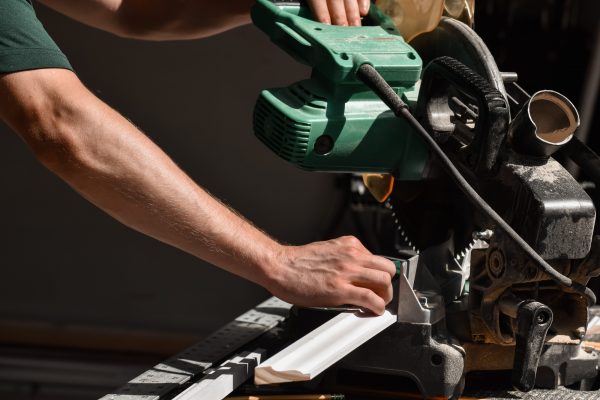
Step 6: Caulk and fill nail holes
When caulking the moulding, use the caulk to fill in any holes created by nails and for the outer and inner seams of the moulding.
Step 7: Touch up paint
Let the caulk dry and then proceed with touching up any areas with paint where caulk was used.
Step 8: Put up wallpaper
Measure and cut the wallpaper to be slightly bigger than the panel. Roll glue on the back of the wallpaper so that it is evenly distributed and put it up on the your wall inside of the frames created by the moulding. Smooth out wallpaper using the smoothing tool and cut any excess wallpaper off with a precision knife.
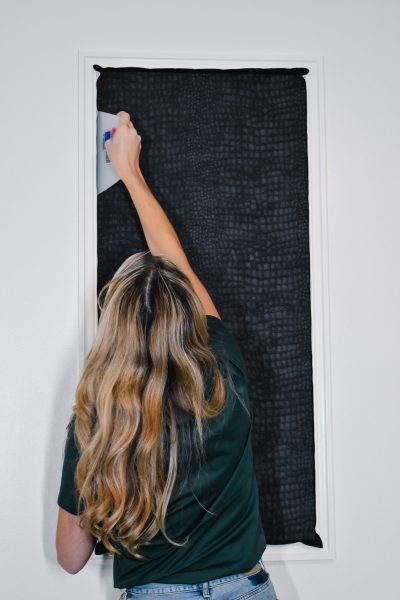
Enjoy your beautiful accent wall!
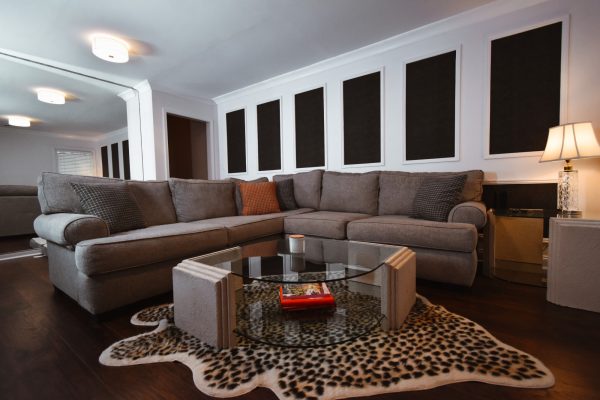
HELPFUL TIPS WHEN CREATING AN ACCENT WALL
- Choose a balanced, unobstructed wall that stands out.
- Choose rooms or spaces where you want to make an impact. Bedrooms, living rooms and entryways are great spaces to create a custom look. Select spaces where guests will see it, or where you spend a good amount of your time.
- Bold colors really make a statement. Dark greens, grey, black and blue are currently in.
- White accent walls make a statement without being too bold.
- Try to pick a style of accent wall that complements the look of your home and room; just because you like a modern style wall doesn’t mean it’s the best pick for a colonial style room.
- Go in with a plan and draw out your design before beginning.
- Find 2-3 moulding profiles that you think will achieve the look you’re going for. Then, take each sample and place it on the wall to see which you like the best.
- Create a jig if you have to repeat a cut. This will save time and help with consistency.
- Use hot glue to apply moulding first so that you can adjust the moulding if needed. Then use finishing nails to secure the moulding.
- Rent a nail gun, use your own or use an adhesive.
- Once everything is in place, apply more nails to ensure it is long lasting.
- Use putty to the nail holes rather than caulking for a better finish.
- If using a paint sprayer, keep 1.5 to 2” of space between you and the wall for an even application.
- Take your time in the finishing stage. The little details when you finish will make the wall look more polished.
- We estimate that creating an accent on a 12′ x 8′ wall can cost around $200. This includes paint, moulding, tool rentals and other materials. You can save money by using tools from your home or borrowing from friends.
For more tips and home inspiration, follow us on Instagram, Pinterest and Facebook! @WeAreWoodgrain